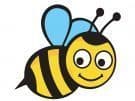Who are we?
We are a family of passionate beekeepers from Albacete, descendants of the area of Peñas de San Pedro, dedicated to the reproduction, care and maintenance of bees for at least 5 generations, dating back to the end of the 19th century. My grandfather, who taught me the trade, was taught by his grandfather. Today we are the beekeepers with the largest beekeeping cabin in the province of Albacete. We aren't a large company, only individuals who love what we do and know how to do it well. We work in the fields, with bees, without trap or cardboard, we are not industry, nor are we mobile. We don't buy or sell. That's why we are know much about traditional / artisan management, and for this reason we have managed to obtain one of the few pure and best quality honeys that can be acquired, at the same time that due to the volume of production that we have achieved, given the great performance that we get, we have the most competitive prices in the authentic honey market. Yields that are achieved with a lot of effort and dedication and having a broad knowledge of hives, flowers, and the weather, as well as the Spanish geography, the existing legislation and above all pampering the bees to reward us with its the fruit of your work. For us, the bees are our friends, they are our pets, our coworkers, our partners, our bosses and our employees, and we will always look for them to be in the best possible conditions. We want them to be healthy and clen, well-fed, well-protected, and strong.
Our products
Due to the way we work, we obtain a great variety of 100% natural honey, apart from pollen, fresh pollen, beeswax, honeycomb and fresh royal jelly. We are transhumant beekeepers, which means that we travel throughout Spain with our bees in the truck, from the south of the peninsula with the beginning of the year to the north to end there in late summer or autumn. We’re always looking for the location in the that there are more flowers, trying to advance the spring (looking for warmer climates) at the beginning of the year, and to delay it as much as possible (looking for cooler climates) in summer. Counting on the life of a half-round flower 20 days, we must move our bees constantly.
In addition to raw honey, we must add that we also produce pollen, both dry and fresh, both in grain and powder, and fresh or honeycomb. It’s food that is especially difficult to find since it involves the destruction of part of the structure of the cologne. We are producers of beeswax or fresh royal jelly, and we also make honey syrup and manufacture candles of 100% beeswax.
Due to the way we work, all our products are 100% natural, without any type of additives, without undergoing any process other than the natural production process of these exceptional products, without overheating, filtering, mixing, altering the natural honey composition.
Both honey and the rest of the hive products are very scarce, due to the small number of hives that exist, the small yield obtained from each one of them and the great demand that these products suffer in international markets, Paradoxically, the shelves of all shops are full of all these products and at prices often below production costs, this is due to the imitation products, which, looking like the original products, in no case are they, and that large companies are taking to the market without caring about defrauding consumers for profitable benefits.
In our family until now we have dedicated ourselves to supplying our product to other intermediaries (wholesale). But we have decided to launch ourselves to sell our honey directly, removing ourselves from intermediaries, who are only dedicated to making the product more expensive and lowering the quality , adulterating in many cases or mistreating it and causing it to lose properties in most cases.
Conclude by underlining the highest quality of the products we offer, committing ourselves not to lower the same quality but to increase it whenever we can. Offering 100% natural products, without any type of additive, preservative, or coloring, as well as mixing with other types of products, neither overheating, nor filtering them. So that they are authentic pure raw honey like that of all history, with countless written references to the lengths of all historical times, treating it as a miraculous healing product, always used and revered by the upper social classes, highly appreciated by the church , the nobles or the philosophers among others throughout the ages, and thus offer for our part a multivitamin product, with proteins, iron, zinc or calcium among other fundamental components.
PRODUCTION PROCESS
- It all starts with water, when nature provides us with it, this, when falling on the mountains, makes plants grow and grow, some of the flowers, and some of those plants that develop flowers, the nectar is obtained depending on whether the nectar is from one flower or another. Different kinds of honey are obtained. In order to obtain honey, it is necessary that the rains are on the appropriate dates and in an adequate quantity.
- The foraging bees absorb with their tongue the nectar of the flowers they visit (they live the nectar of the flowers), put it in their crop and return to the hive, where they deliver it to the young workers they find closest to the pike. They go out again in search of more nectar, as soon as they have passed the load on to their sisters. With this process, two fundamental objectives are obtained: the one discussed above and the other the reproduction of flora, improvement and conservation of biodiversity, since this is the natural way to pollinate innumerable flowers and thus ensure that there is a rich ecosystem.
- The bees of the interior quickly get to work to transform the nectar into honey, since the percentage of humidity must be lowered, from 60% with which the nectar enters the hive, to 16 or 18%, which has the pure honey when the workers cover it in the cells. The process can take several days, depending largely on two factors: humidity and outside temperature.
- Thousands of young bees, which have not yet left the hive, pass the nectar from mouth to mouth while enriching it with enzymes, which they secrete themselves. When the nectar contributions are very high, the nectar droplets are deposited on the combs, since the bees do not have time to process it. At night, when all the bees have been collected inside the hive, young and nurse bees have just processed the surplus nectar that entered during the day. The first processing of the precious liquid is finishing, they managed to lower the humidity to 25%, and provide active ingredients.
- The nectar is deposited in the cells of the combs, where it will continue to lose moisture, until reaching the perfect degree of maturation, around 18%. When the bees check that the honey is ready to be stored, they seal the cell with a thin layer of wax. This process is called the capped cells and it is the signal that indicates to the beekeepers when the honey is ready to be collected from the hives (when it is ripe).
- During the entire dehydration process of the nectar, the loss of humidity is used by the bees to cool the hive, creating air currents between the combs by hundreds of fan bees. They manage to lower the internal temperature of the hive by more than 15 degrees. In this way, keeping the temperature of the brood nest constant, which is always around 36 degrees.
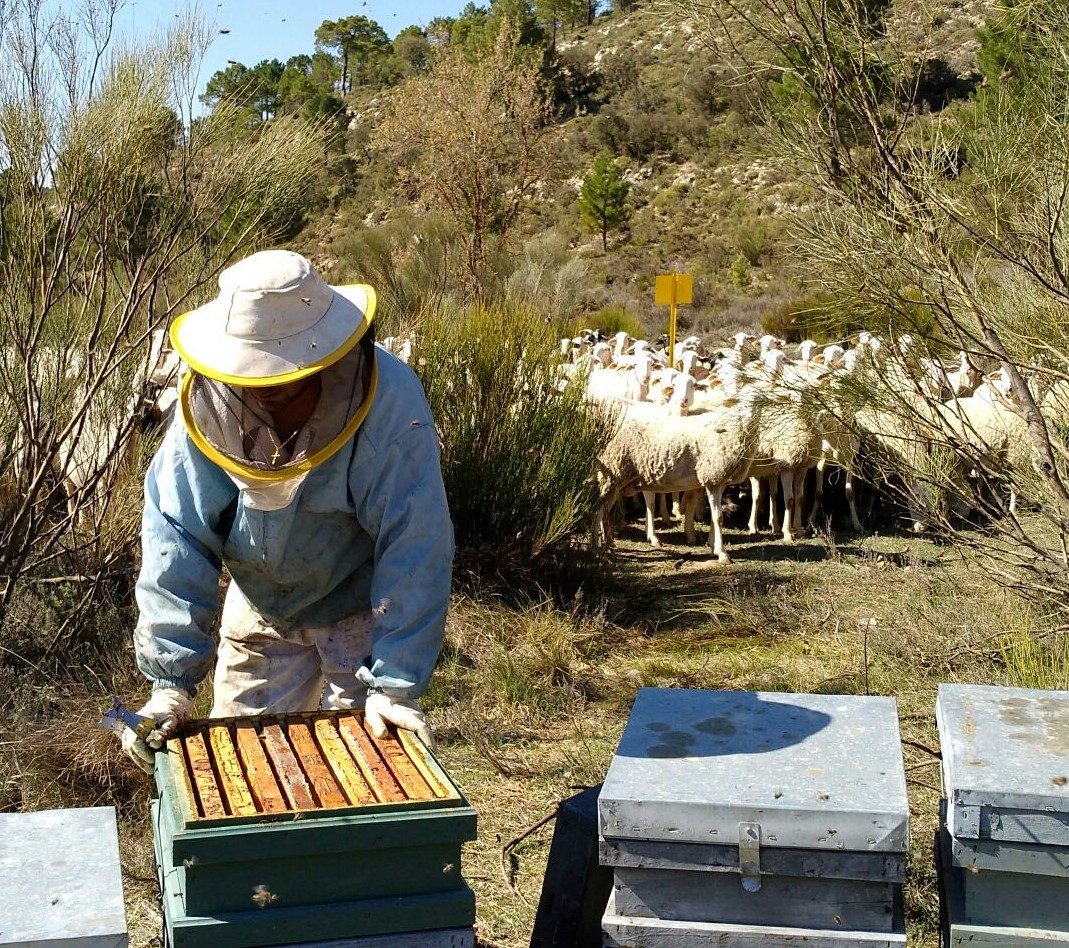
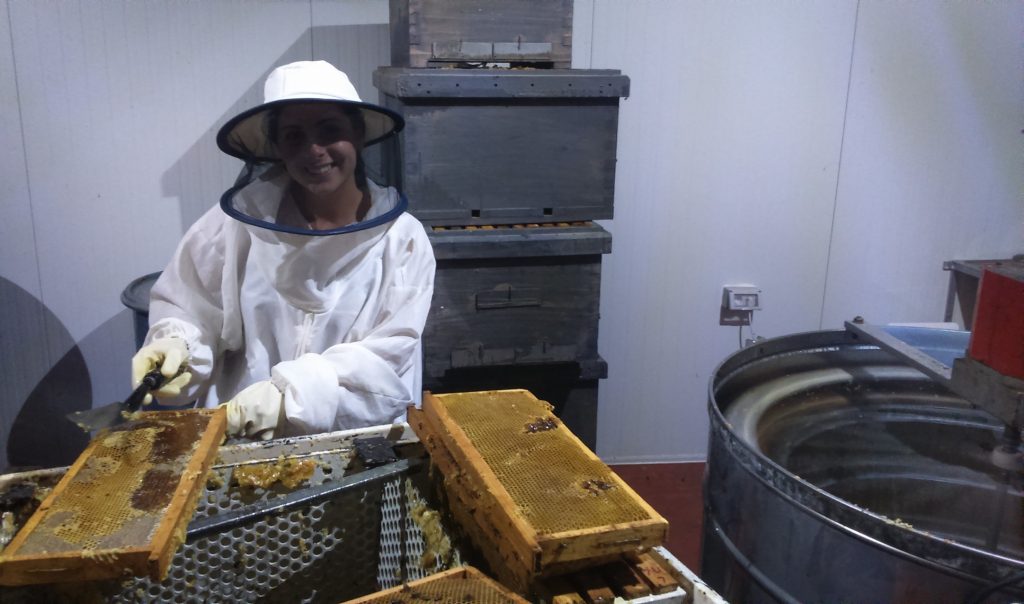
EXTRACTION PROCESS
After this process of honey creation by the bees, when the flower season is over, we extract the honey from the hive. This honey is located throughout the hive, but we only collect what is in the honey rises, chambers or drawers independent of the brood chamber, which are located immediately above it. In this way, we remove only the surplus of honey that the hive has produced. We don’t touch most of its production, and it stays in the brood chamber so that the colony develops correctly and at no time is it hungry or cold for lack of honey.
In this photo you can see how the honey rises are, half the size of a brood chamber, the queen does not usually walk in this part of the hive because she moves through the lower area where the bee bolus is located and it breeds that are the eggs and larvae in the process of development towards bee, be it worker bee, drone bee or queen bee. On some occasions, queen worker bees appear but they only know how to lay drone bee eggs and the colony dies out in a short period of time.
After removing these rises, they are taken to the honey extraction room in our facilities and the honey is uncapped and centrifuged there as can be seen in the following photo. With the help of machines called honey extractors, designed for this purpose, which connected to the light or manually rotate with a process similar to that of a washing machine.
As you can see in the photo next to it, first the various frames of the hikes are removed, then they are uncapped, which means that the wax film that they have been covering the honey is removed to keep it better inside the hive.
Once this process is finished, the frames and rises are stored until the beginning of the next flowering, when they will be placed on top of the hives in the mountains so that the bees can store the honey there again, given that, they naturally, while in the field there are flowers with nectar, and having storage capacity and being in good health, will not stop sipping nectar from the flowers and later transform it into honey. And it is like in the case of other farms livestock, it is harmful to the colony if we do not extract the honey because what we call hive blockage occurs, all the cells are filled with honey and it reaches such a point that there are no free cells. So that the queen bee can deposit her eggs and new bees are born that contribute to the maintenance and survival of the colony.
Then we only need to pack and store the honey for later distribution.
As you can see we have a closed circle in which we raise bees, produce honey and harvest it, package and sell ourselves. This is why we can say that it is zero km food because it does not go through any hands except those of the producer and those of the consumer.
COMPANY LOCATION
Our facilities are located in Albacete, where we have the main warehouse in the same municipal area, near the urbanization of old houses, we also have other small warehouses scattered throughout the province that allow us to have a greater capacity when caring for as many bees as we have.
Despite the fact that the facilities are in Albacete I must say that most of the collection time is spent outside the province, because this area is not particularly rich in flowers, nor does it have a very good climate for the bee so that we have to go to other provinces in search of flowers – practising what is known as transhumance.
The transhumance consists of moving the bees to areas that have good pastures or in this case many flowers, depending on the dates of the year different honey will be harvested in a different area, we take the bees to these areas and before moving them again we extract the honey so that it does not mix and the monofloral kinds of honey can be obtained.
This transhumance is always carried out at night, while the bees sleep in the hive so that they are all inside the box. Before loading, we close the door and when we unload it, we open it so that they can travel without any problem and do not get lost on the way.
This is a photo taken one of these transhumance nights, as you can see we used a rigid truck with a platform, and although it is not seen here, it has a hydraulic boom between the box and the cabin to be able to load the truck faster and lighter.
The beginning of the route is located in the province of Albacete, in the Sierra del Segura, where the bees spend hibernation, when in Albacete it is still very cold for the bees, in other parts of Spain there are already flowers. The transhumance starts at the end of winter so we go to the south. The first trips are not in search of honey, we are going to pollinate farms in Murcia or Alicante, we provide this service so that these farms can pollinate their trees. Because it t´s not like that, they should grow other things and there would not be the variety of products we have nowadays. We also take the opportunity to approach the first harvest, pure orange blossom honey (lemon or orange or mixed) in Murcia or Alicante in the month of March-April, when these flowers dry we return to Albacete, in search of pure rosemary honey in April-May- Also in Albacete we collect pure thyme honey in May and pure broom honey in May / June. In May / June we go to Seville to collect pure honey from Matalauva and pure honey from sunflower before eucalyptus, from there we go to Palencia or Cantabria to harvest honey or oak honeydew in September and pure forest honey in September-October. In addition, every year, when the rosemary campaign ends in Albacete, part of the bees, instead of going to Seville, are taken to Segovia, to harvest pure lavender honey and pure bramble honey. Each year the route varies depending on the rains that have occurred along with it, but so you can get an idea of how transhumance continues to be practised in the 21st century, just as it did since Roman times. The only difference is that now we use motor vehicles instead of doing it on foot. From the south of the peninsula to the north, always looking for the best “pastures”, thus obtaining a variety of quality and a good price because the same bee colony produces a large quantity of honey. If the autumn and winter are mild, the pure rosemary honey can be brought forward and be the first harvest of the year, leading to two harvests of pure rosemary honey, one before and the other after the orange blossom. Finally, add that there are many more types of kinds of honey such as chestnut among others, that we do not harvest at the moment but that we are looking to do in the future because the most important thing in the matter of transhumance is to have the locations in the to place the hives, as well as with contacts in the target area to monitor and care for them.
This photo is taken in the Picos de Europa National Park, as we can see we place electric fences to keep away the brown bears that abound in these areas and those who love honey. Even with these measures, on many occasions, they manage to access the hives to eat the honey they love.
*All these dates and locations may vary from year to year depending on various factors, based on weather.
OUR BEES
Currently, we have an apicultural hut of approximately 1,600 hives or 96,000,000 bees (calculating 60,000 bees per hive). In winter they are all in the province of Albacete and the rest of the year we distribute them throughout the length and breadth of the peninsula. Last season our bees provided us with approximately 60,000 kilos of honey of all the varieties. We love beekeeping and we do not stop aiming to have more bees every year. For us, the bees, they are our friends, pets, co-workers, partners, bosses, and employees. We will always want them to be in the best possible conditions: healthy, clean, well-fed, well-protected, and strong.
96,000,000 BEES
1,600 BEEHIVES
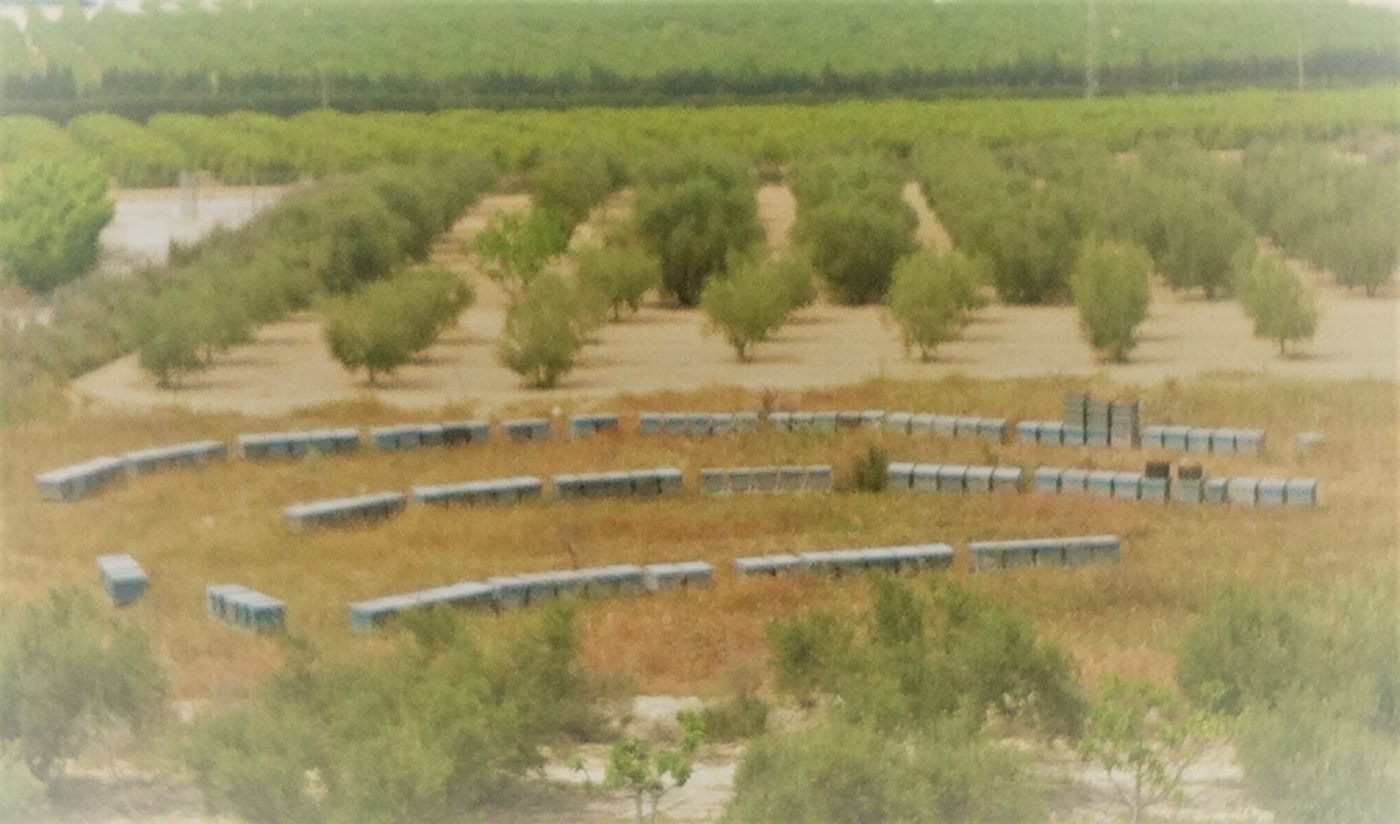
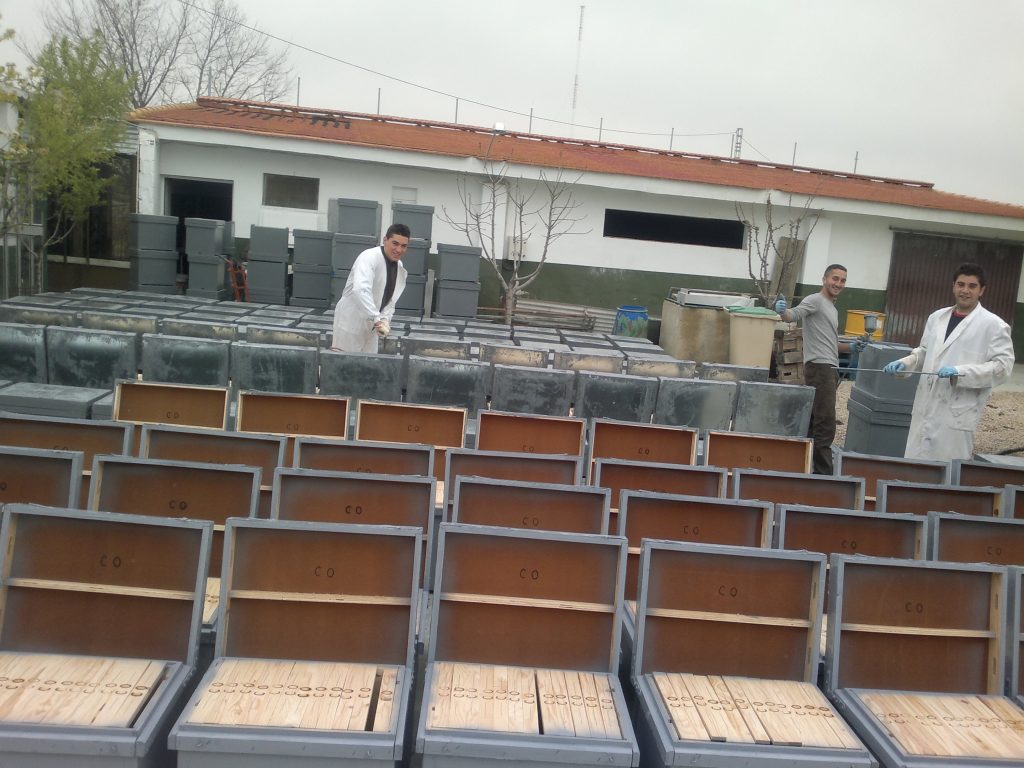
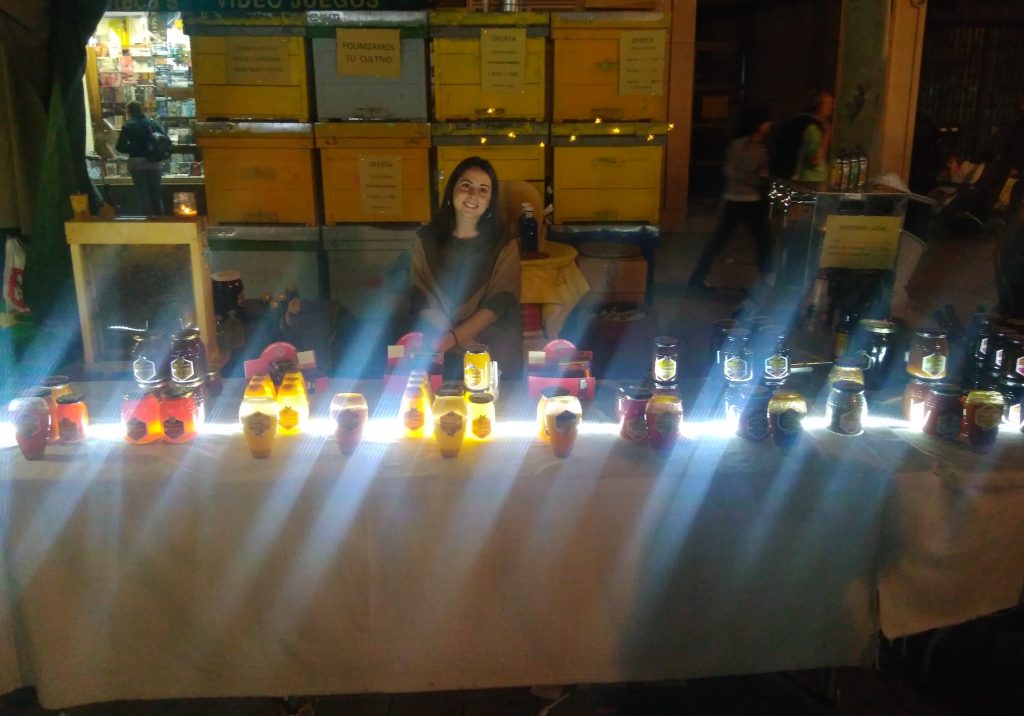
OUR FACILITIES
Currently, among our facilities we have the following spaces:
Two warehouse buildings, in which we keep the vehicles we use, as well as a reserve of new hive boxes since the boxes are made of wood and deteriorate over the years, we have beeswax reserves that are essential for the development of future bee colonies, in addition to food for the winter and an exclusive area for treatments against various diseases and threats against bees. We also have a workshop with all the necessary tools for the daily work involved in this trade.
At the same time, we have containers and cold rooms to store all the material that can degrade over time because wax or empty bees boxes, as well as honey or honey rises, can be attacked by moths or others predators that feed on these products if we are not careful to store them in these conditions.
On the other hand, we have a small packaging machine, with 10 different decanters (large containers with a tap from which it is packaged), in order to have 10 different varieties of honey available for sale, which we supply with the honey we have in the warehouse, to later serve it to our clients.
Finally, we have small warehouses distributed throughout the province of Albacete, since it is in the area that bees spend the most time, and thus we can work with more room for manoeuvre since we do not have to travel to the main facilities in case of small incidences.
